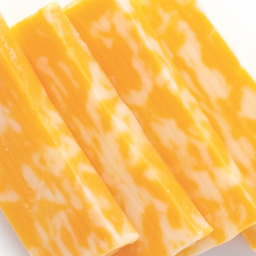Lead can hurt your family.
Lead is a metal that our bodies don’t need. Too much lead in our bodies can cause problems, especially for children.
Children exposed to too much lead may not look or act sick but may have problems with growth and learning.
Avoid
- Storing foods in imported lead-glazed pottery or leaded crystal
- Fruits or vegetables grown in lead-contaminated soil
- Foods or drinks made with lead-contaminated water
- Letting children eat or chew on chipping or peeling paint
Eat Fewer
- Fried foods
- High fat meats such as sausage, bacon, and hot dogs
- Foods cooked with fatty meats, butter, and lard
- High fat snacks such as chips and cakes
Protect your family from lead with healthy foods!
3 Key Nutrients
- Calcium
- Iron
- Vitamin C
Good Nutrition
Good nutrition is one way to protect your family from lead.
For children and adults, three key nutrients can play a role in protecting the body from the harmful effects of lead:
- Calcium
- Iron
- Vitamin C
These nutrients help the body absorb less lead and are part of a healthy diet. Choose a variety of foods daily.
For babies, breast milk provides the best nutrition and many health benefits from the start.

SOURCES OF CALCIUM INCLUDE:
- Milk
- Yogurt
- Cheese
- Cottage Cheese
- Pudding
- Calcium fortified orange juice
- Dark, leafy green vegetables

SOURCES OF IRON INCLUDE:
- WIC-approved cereals
- Legumes (peas, beans, lentils)
- Dried fruits
- Lean red meats, fish, chicken, turkey
- Dark, leafy green vegetables

SOURCES OF VITAMIN C INCLUDE:
- Oranges
- Grapefruit
- Tomatoes
- Bell peppers
- Broccoli
- Potatoes
- Strawberries
- Melons
- WIC-approved juices
Meal Planning
It is important that your family has regular meals and snacks. This may help keep lead from being absorbed.
Ask your WIC Nutritionist for ideas on healthy food choices and serving sizes.
Ask your WIC Nutritionist for ideas on healthy food choices and serving sizes.
Eat More
- Lean meats
- Baked, broiled, or steamed food
- Fresh fruits and vegetables
- Low fat snacks such as pretzels, graham crackers, and frozen fruit juice pops
Remember — Always wash your hands before you eat!
Talk with your health care provider about lead testing for your child. For more information on lead, contact the Indiana Lead and Healthy Homes Program at:
This institution is an equal opportunity provider.